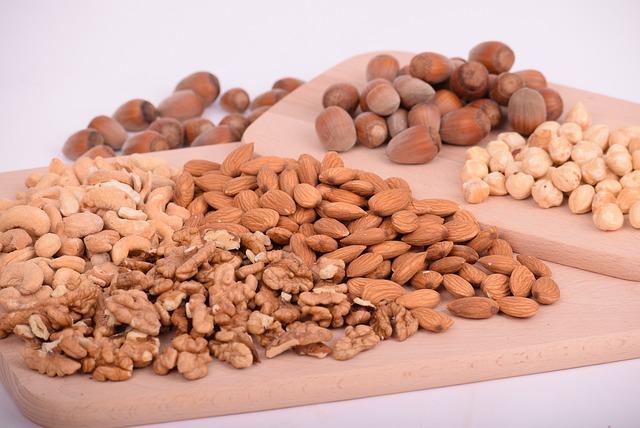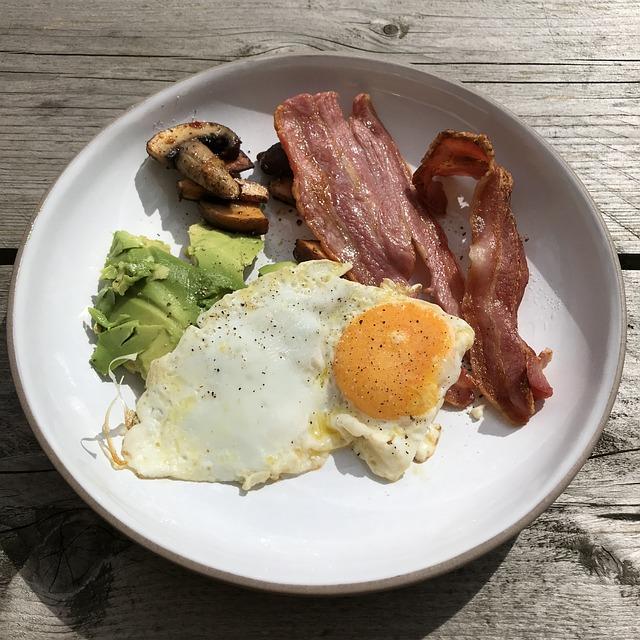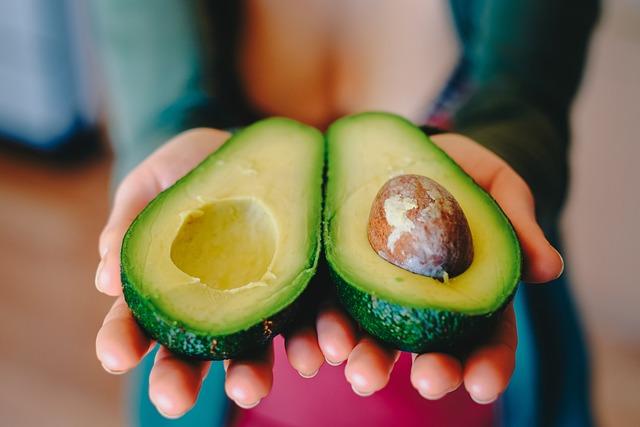In the dieting world, two terms can frequently be heard: the ketogenic (keto) diet and the low carbohydrate (low carb) diet. Both diets are about reducing carbohydrate intake, but they have subtle, yet significant differences in their approach and goals. This article will be taking a look at keto vs. low carb to see what those differences are between these two diets.
Understanding these distinctions is crucial for individuals seeking to make informed dietary choices. I am not a healthcare professional, but I know that no one diet will fit each individual or help everyone achieve their goals whether for weight loss or health reasons.
For these reasons alone it is best to do some research on any diet plan you are considering trying.
Note: Always, always consult with your doctor before starting to change your diet so much. Some medications and conditions may make either of these diets not a good idea to follow and only your doctor could tell you that. And even after you start dieting and losing weight, it’s a good idea to keep your doctor informed in case medications need to be lowered.
Basic Factors for Keto vs. Low Carb
How to calculate net carbs: Take the total carbs indicated on the food packaging and subtract the following: fiber, sugar alcohols and other nondigestible carbs. The total you get after subtracting everything is your net carbs. This is what both of these diets go by, net carbs.
Before starting any diet: As yourself the following questions.
- Are you taking any medications that could interfere with either of these diets? (insulin or high blood pressure)
- Currently breastfeeding
- Have a severe chronic medical condition
These are factors that your doctor would take into consideration when discussing ideal diets for you and your health.

What is Ketosis
Let’s define ketosis first. Putting your body in a state of ketosis is a big difference between keto vs. low carb diets that this article is discussing. And not all low carb diets will result in putting you into ketosis.
Your body goes into this ketosis state once the absence of glucose, derived from carbohydrates, in your body has been depleted.
To achieve this state, a dieter typically limits their carbohydrate intake to approximately 20-50 grams per day which is about 5-10% of their total daily calories when eating 2000 calories each day.
The remaining caloric intake is consumed through healthy fats, such as avocados, nuts, and olive oil, for about 70-75% of the daily calorie intake and moderate protein consumption, for around 15-20% of daily calories. This is how macronutrients are balanced depending on how the dieter consumes their calories.
Common Signs You are in Ketosis
- Bad Breath
- Appetite diminishes
- Gut problems
- Weight loss
- Fatigue
- Digestive issues
- Increased focus and energy

Basics of the Keto Diet
The ketogenic diet has become one of the most popular diets these days. Originally, this diet was created in the 1920’s to treat children with seizure disorders when medications were no longer working.
Research was beginning to show that when our bodies are in a state of ketosis, it helps reduce the frequency of seizures.
But then the diet was really popularized in the ‘70’s and ‘80’s by Dr. Robert Adkins. Basically, his diet is a high-fat, low carbohydrate, moderate protein eating plan, but is not as strict as keto and a low carb diet promotes a more moderate weight loss.
The primary objective of the keto diet is to achieve and maintain a state of ketosis. By significantly reducing carbohydrate intake, the body shifts from using glucose as the main energy source to burning stored fats, leading to the production of ketones.
This diet plan is fairly restrictive when it comes to the amount of carbs you can consume. It suggests that 70% of your daily calories should come from fat, 20 percent from protein leaving only 10% for carb intake.
And those that follow a really strict keto-type of diet will use 70% fat and 25% protein leaving only 5% for carbs. These carbs should only come from the lower carb veggies. Basically, no sweets, no fruits, and no whole grains. Instead, you load up on proteins, veggies and healthy fat to feel full and keep your energy up.
To stick to these types of numbers for this diet, it is highly recommended that you count your macros daily to ensure that you are within the suggested ranges and keep yourself on track.
Pros
- May help with seizures
- Fairly quick weight loss
- May improve insulin sensitivity
- Reduces appetite
Cons
- Constipation
- Risk of keto flu systems (fatigue, brain fog, headaches, irritability)
- Long term data is limited
- May be difficult to stick to long term
- Easy to knock yourself out of ketosis
- May be too restrictive for most people
- Hard to maintain long term
Health Benefits
- Weight loss
- Appetite control
- Blood sugar regulation
- Begun to show promise for certain neurological conditions like epilepsy and Alzheimer’s disease
- May also help impair growth of certain types of cancer

Offshoots of a Keto Diet
The keto diet is very popular right now, but there are two offshoots that I began hearing about a few years ago. The dirty keto and lazy keto diets. Here is a quick overview of both.
Those that follow a lazy keto are simply keeping their carb intake to between 20-50 grams a day. In other words, not so strict and they don’t really keep track of macros.
Dirty keto followers follow the basic macro guidelines for keto, but it doesn’t really matter where those macronutrients come from, and they also don’t keep track of daily macros other than their carb count.
Basics of the Low Carb Diet
While a low carbohydrate diet shares basic fundamental principles with the keto diet, the amount of carbs consumed is different. A low carb diet is much less restrictive on carb consumption that could range from any amount of carb counting that falls below 100 grams.
And I’ve seen as much as 150 grams of carbs allowed. It all depends on whose low carb diet you choose to follow and just like with the keto diet, there are many variations out there.
So, you can see that while basic principles between the two diets seem a lot alike, the amount of carbs allowed is very different.
A low carb diet may result in mild ketosis for some individuals, but the primary focus is on reducing overall carbohydrate intake without necessarily inducing a constant state of ketosis. The body primarily relies on the breakdown of glucose, as its energy source.
And by following either diet, with lowering carbohydrate intake, the body is encouraged to rely on alternative energy sources, such as fats and proteins.
Pros
- Less extreme than keto
- Promotes weight loss
- Less restrictive and easier to follow
- Eliminates most processed high carb foods
- Can sustain this diet long term
- Can use a broader range of macronutrients
- More flexibility
Cons
- Limits certain foods such as rice, grains and starchy veggies
- May have adverse effect of micronutrient intake
- May feel weak
- Constipation
- May not induce ketosis
Health Benefits
- Improved blood sugar control
- Weight loss
- More easy to sustain long term
- Improved insulin sensitivity

Differentiating Factors
Macronutrient Ratio Differences in Keto vs. Low Carb:
Keto Diet: As mentioned above, the keto diet emphasizes a high-fat approach, aiming for a macronutrient ratio of approximately 70-75% fat, 15-20% protein, and 5-10% carbohydrates.
Low Carb Diet: The low carb diet encompasses a broader range of macronutrient ratios, typically involving higher protein consumption and moderate fat intake. The ratios may vary from 10-30% carbohydrates, 20-40% protein, and 30-60% fat.
Basic Health Benefits of These Two Diets:
Studies seem to be starting to show that we don’t need to fear natural fats as once believed. But right now, we seem to be demonizing carbs. The general consensus seems to be leaning toward consuming the right “type” of fats and carbs rather than just eliminating them.
We need to minimize our intake of sugar and starches (higher carb foods) while getting enough adequate amounts of protein and natural fats such as avocado, seeds and nuts and olive oil.
Then you should begin to see your blood sugar become more stabilized, and your levels of the fat-storing hormone, insulin, drop. This is a very good thing for your health and should make it easier to burn the fat stores in your body. Studies are beginning to link lower carb diets to several health benefits such as with diabetes, improved blood sugar levels, cardiovascular risk factors and weight loss, of course.
Common Low Carb/Keto Mistakes to Avoid
- Eating too many carbs
- Eating too much protein
- Giving up too soon
- Being afraid to eat fat
- Not replenishing sodium
- Not staying away from bread, pasta, most fruits, beer, soda, potatoes, rice, juices and candy (any sweets)
How to Get Started on Either of These Diets
- Start by cutting out all processed foods and sugars including sugary beverages
- Eat some fruit but still maintain a low carb count (blueberries and strawberries are preferred fruits)
- Eat more healthy fats including plant protein
- Make sure that fat intake includes heart-healthy, anti-inflammatory foods such as avocados, olive oil, flaxseed and olive oil

Summary
The biggest differences between keto vs. low carb diets are their two different takes on the amount of carbs and fat intakes to be consumed each day.
Essentially both of these diets concentrate on limiting carb intake with the keto diet being more restrictive while the low carb diet may take a little longer to reach your desired weight.
It is worth noting that the effectiveness and benefits of a low carb diet may vary among individuals. Factors such as metabolic health, physical activity levels, and overall dietary worth play a role in determining the outcomes.
For either of these diets, I recommend you work with your healthcare professional, doctor or a registered dietitian to help you decide which of these two diets would be best for you.
Final thoughts
While the keto diet and low carb diet differ in their specific macronutrient ratios and metabolic states, both approaches share the common principle of reducing carbohydrate intake.
Ultimately, the choice between keto vs. low carb dieting depends on personal goals, preferences, and individual health considerations. This is why checking with your healthcare professional is essential to determine the most suitable dietary approach for optimal health and wellbeing for you.
Everyone’s body reacts differently and has slightly different needs. So go for what feels good to you, helps you become healthier and works for you.
At the end of the day, you want to create and follow a diet for yourself that feels comfortable for you and that you can actually commit to long-term.
And remember your ultimate goal, besides losing weight, should be to become healthier.
Are you following one of these two diets? If so, I’d love to hear how things are going for you. Or maybe you have some great tips about how you are achieving your goals that you can share with your fellow dieters. Till next time….take care.
Cher
Relevant Reading
Getting Back on Track With Your Diet
Ten Easy Tips to Improve Your Health
Mason Jar Salads










